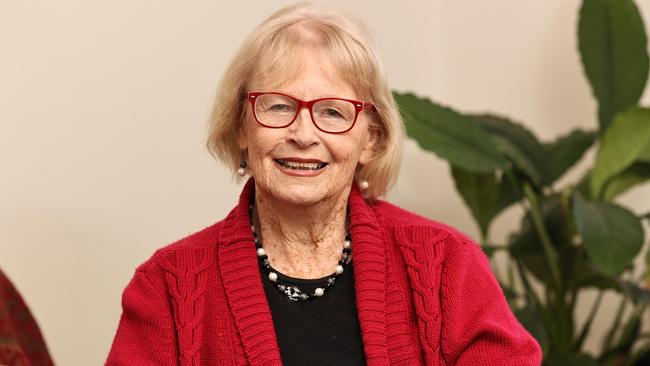Nurse revealed fears of future for students involved in early fertility operation
A nurse who worked at a “hole in the wall” in the car park of a pioneering Brisbane fertility clinic in the 1970s has told of some of the more sketchy practices used, including a vet being brought in to examine specimen quality.
QLD News
Don't miss out on the headlines from QLD News. Followed categories will be added to My News.
A retired Brisbane nurse who collected medical students’ sperm donations at a fertility clinic in the 1970s has claimed the pioneering doctor leading the conception program kept records “in his head” and that a veterinarian was brought in to examine specimen quality.
Di McCarthy, 76, was a registered nurse at Dr John Hennessey’s clinic at Wickham Terrace and manned the “hole in the wall” in the car park where medics would drop off their sperm donations.
“It was a new area in medicine and processes were raw but I questioned the lack of record keeping,” she said.
“When I asked Dr Hennessey he simply said that all the information was in his head and that scared me.

“How could he remember every insemination over years?
“I had an awful feeling that one day those handsome young students, who donated anonymously, could be exposed.
“I was also aware that more than one woman would be given donations from the same donor and Brisbane was not a big place back then.”
A Courier-Mail investigation revealed some of Queensland’s top doctors were encouraged to “anonymously” donate sperm when they attended the University of Queensland as part of the program run by the brilliant Dr Hennessey.
The report highlighted that thanks to advances in DNA technology, 40 and 50 years later, many of those doctors are now living in fear of a knock on their doors from children they helped conceive.
“When I saw the story in The Courier-Mail I immediately thought OMG it’s happening, I knew it would,” Ms McCarthy said.
The Brisbane woman worked for Dr Hennessey in 1971 when she was pregnant and then periodically throughout the 70s.
“I would collect the specimens that were left by the students in the hole in the wall outside the clinic.,” she said.
“I’d put the $10 cash payments in an envelope for them to pick up. It doesn’t seem like a lot but it was a good perk for young students.”
The nurse said that Dr Hennessey would examine the potential donors to make sure they were healthy and when they were approved as donors they would get a call when their donations were needed.
“When the doctor knew he had women coming in the next day who would be ovulating and ready for the insemination, he would call a donor and ask them to drop off a sample at the hole in the wall,” Ms McCarthy said.
“The donations weren’t frozen back then so they had to be used pretty quickly
“At the time human insemination was in early stages and I remember a veterinarian with experience in animal insemination would come in and study the samples under a microscope to check their quality.”
Ms McCarthy said she believed that Dr Hennessey was a good man and his drive to help childless couples was “palpable”.
“His heart was in the right place and he was a godsend to many couples but when I used to watch those handsome young medics come in I often thought I hope this doesn’t come back to bite you,” she said.
“Never mind DNA advancements, it is human nature to want to know where you come from. “A child could have a congenital disease and the parents need medical information or a couple could split up and suddenly announce to their child that they were donor conceived. It all seemed like a minefield.”



